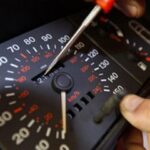Deciding whether to repair an older car, especially one that has clocked 200,000 miles, is a common dilemma for many car owners. If you’re facing this question about your 2008 vehicle, you’re likely weighing the costs of repairs against the car’s remaining value and potential lifespan. This article will explore the key factors to consider when making this important decision, helping you determine the most practical course of action.
One real-world example comes from the experience of a long-term Toyota Camry owner. Having driven their 2005 Camry for 18 years and nearly 200,000 miles, their experience provides valuable insights into the longevity and maintenance of well-regarded vehicles. Initially purchased for $22,000 with a 0% loan, this Camry benefited from consistent, if not overly meticulous, maintenance. Oil changes were performed more frequently than the 5,000-mile recommendation, and air filters were changed every 30,000 miles using original Toyota parts, which were deemed superior. Conventional motor oil and mostly Purolator or Fram oil filters were used. Currently, the car consumes about a quart of oil every 2,000 miles, without any apparent leaks.
Over its lifespan, this Camry required two water pumps and one alternator, all replaced after surpassing 100,000 miles. The drive belt and spark plugs were replaced at 150,000 miles, though the original parts still appeared to be in good condition. Notably, the original oil drain plug gasket remains leak-free. The transmission fluid has never been changed, and the fluid level has remained consistent. More recently, the struts were replaced for $1000 in parts, with labor done by a family member. Around 150,000 miles, motor mounts were also replaced at a cost of approximately $100.
The rear drum brakes are still original and, while likely worn as indicated by the pedal feel, were deemed “fine” by a professional mechanic. Front brake pads were first replaced at 75,000 miles, with subsequent replacements using Toyota pads, noted for their longevity. Battery replacements have occurred over time, with the original battery lasting the longest. Cheaper Napa batteries were used for the last three replacements, each lasting around three to four years. A simple voltage drop test during engine cranking can effectively assess battery condition.
This owner’s experience suggests that while repairs are inevitable with high-mileage cars, a balanced approach to maintenance can be effective. They emphasize that over-maintenance might not always be necessary, as cars are often replaced for various reasons before reaching the end of their potential lifespan. Furthermore, performing maintenance and repairs yourself can significantly reduce car ownership costs over time. For those pondering whether to invest in repairs for a 2008 car with 200,000 miles, this real-world example highlights the importance of considering the vehicle’s history, the nature of the required repairs, and your own capacity for cost-effective maintenance.

